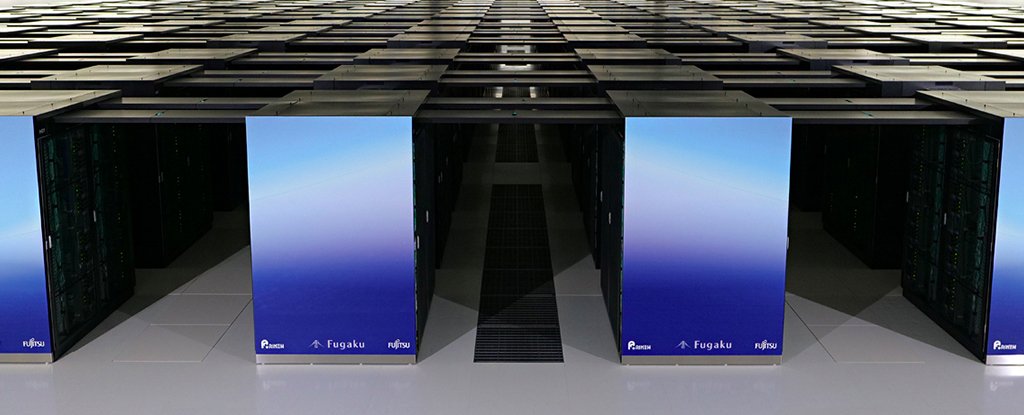Products You May Like
The list of the fastest 500 supercomputers in the world just got updated again, and there’s a new number one: the Fugaku supercomputer built by the RIKEN Institute and the Fujitsu tech company in Japan.
IBM’s Summit supercomputer has been comprehensively pushed into second place, because Fugaku can crunch through 415.5 quadrillion computations per second (also known as 415 petaflops), which is 2.8 times the record previously reached by Summit.
In some specific tasks, the machine can actually peak at more than 1,000 petaflops or 1 exaflop. In comparison, the next-gen Xbox coming later this year offers 12 teraflops – or around one-hundredth of a petaflop – in graphical processing power.
While you might have a single dual-core or quad-core processor inside your laptop, Fugaku uses a custom 48-core chip from Fujitsu, and packs in 158,976 of them. A supercomputer needs a serious amount of computing power to beat the rest of the Top 500, but Fugaku – more than six years and US$1.2 billion in the making – has got it.
The huge computer won’t even be fully operational until next year, but its formidable processing power is already being put to good use as it’s up and running at RIKEN in Kobe, Japan. The newly-crowned fastest supercomputer is working on ways to combat the coronavirus, and has already provided some smart analysis of how infectious droplets might spread in the air.
That’s a reminder that these large room-sized systems do more than just set records – they tackle all kinds of difficult calculations involving huge numbers of variables, from climate forecasts to modelling chemical compounds at the molecular level.
As well as being the first time since Japan has topped the list since 2011, Fugaku is also the first supercomputer built on ARM architecture to claim the number one spot. ARM processors are simpler and more power-efficient than other types, which is why they’re often used in mobile devices where heat and power draw needs to be minimised.
That doesn’t necessarily mean ARM chips are less powerful though – a lot depends on how they’re used by software, and the other components installed alongside them. You might have heard in the last few days that Apple is switching its laptops to ARM processors rather than Intel processors in the next couple of years.
It’s the 55th time the TOP500 list of supercomputers has been published; it comes out twice a year to track the evolution of computer processing power. This edition of the list features machines pumping out a total of 2.23 exaflops of power, which is up from 1.65 exaflops six months ago.
Don’t expect the new record to stand for long, however: supercomputers capable of averaging more than an exaflop of power are in the pipeline, and should be up and running by the time the TOP500 is assessed again.
The list is compiled by Erich Strohmaier and Horst Simon of Lawrence Berkeley National Laboratory; Jack Dongarra of the University of Tennessee, Knoxville; and Martin Meuer of ISC Group, Germany.
